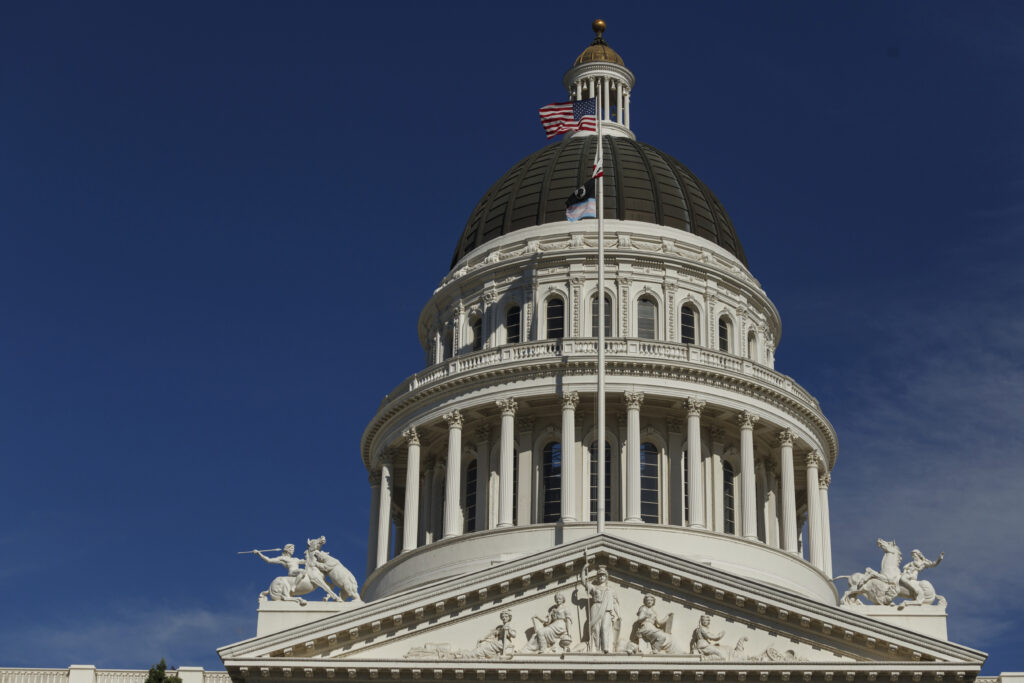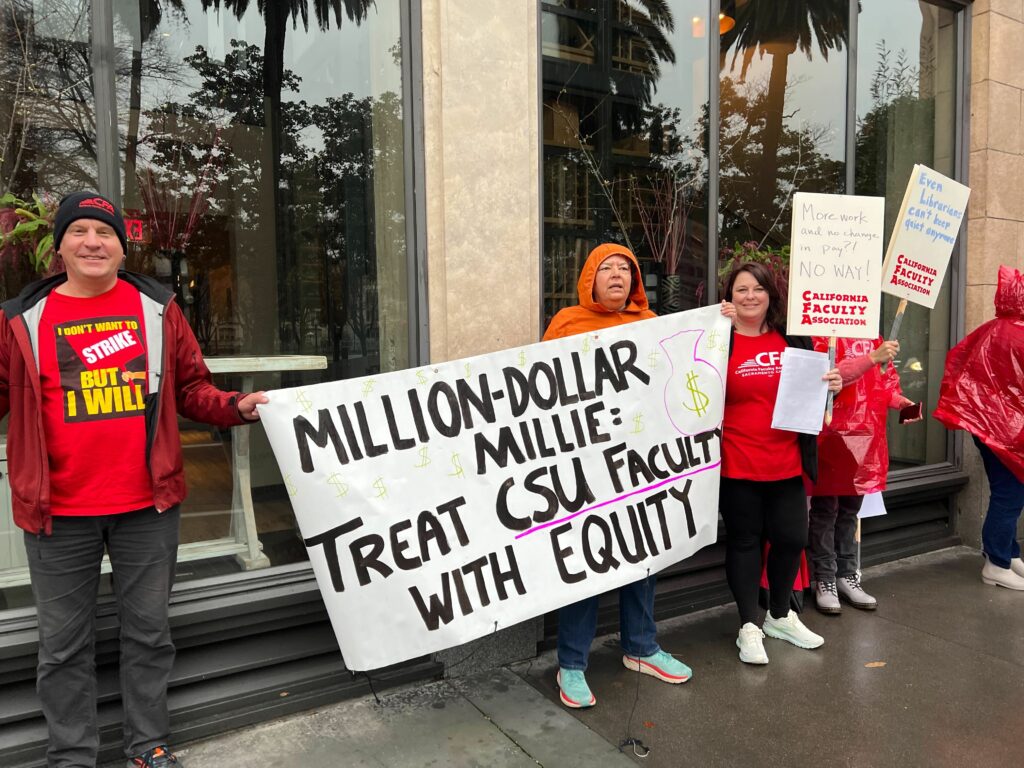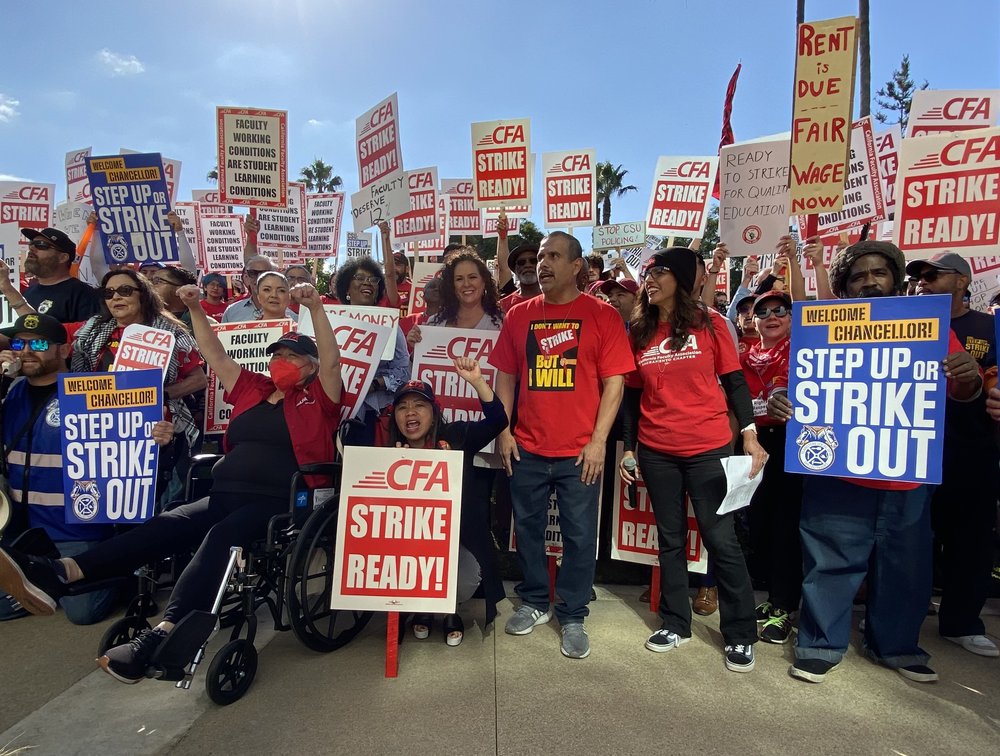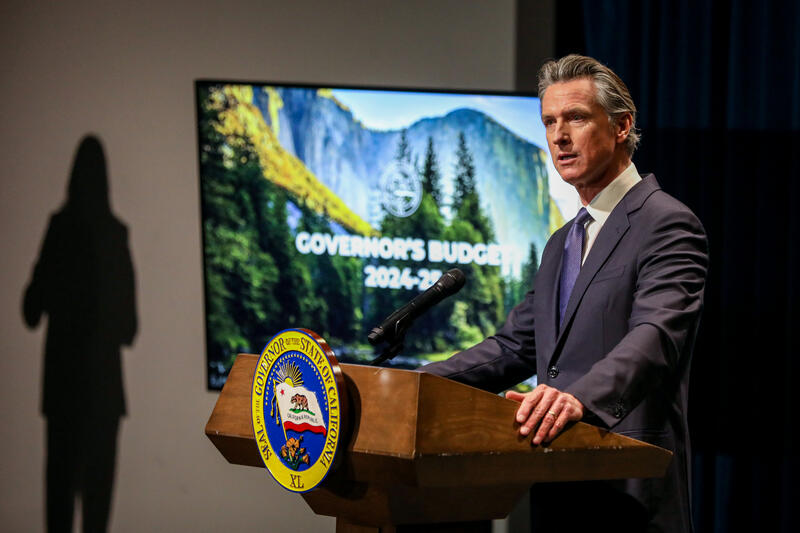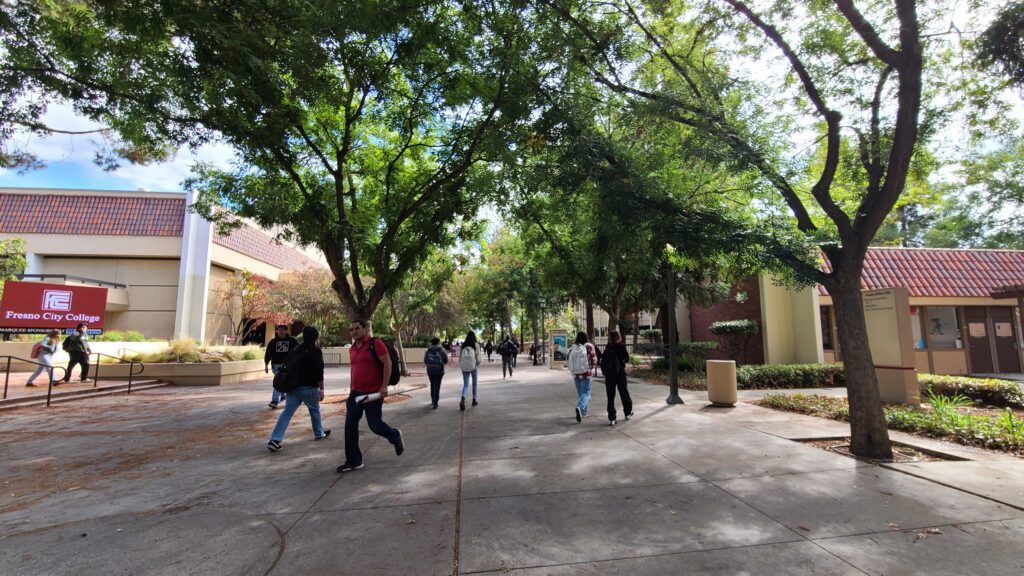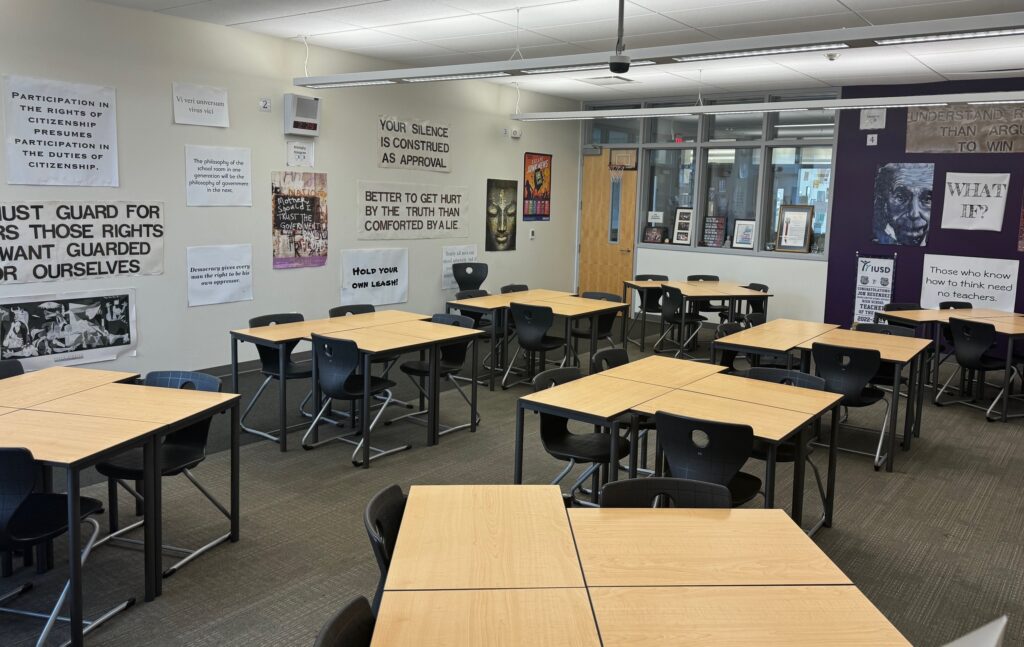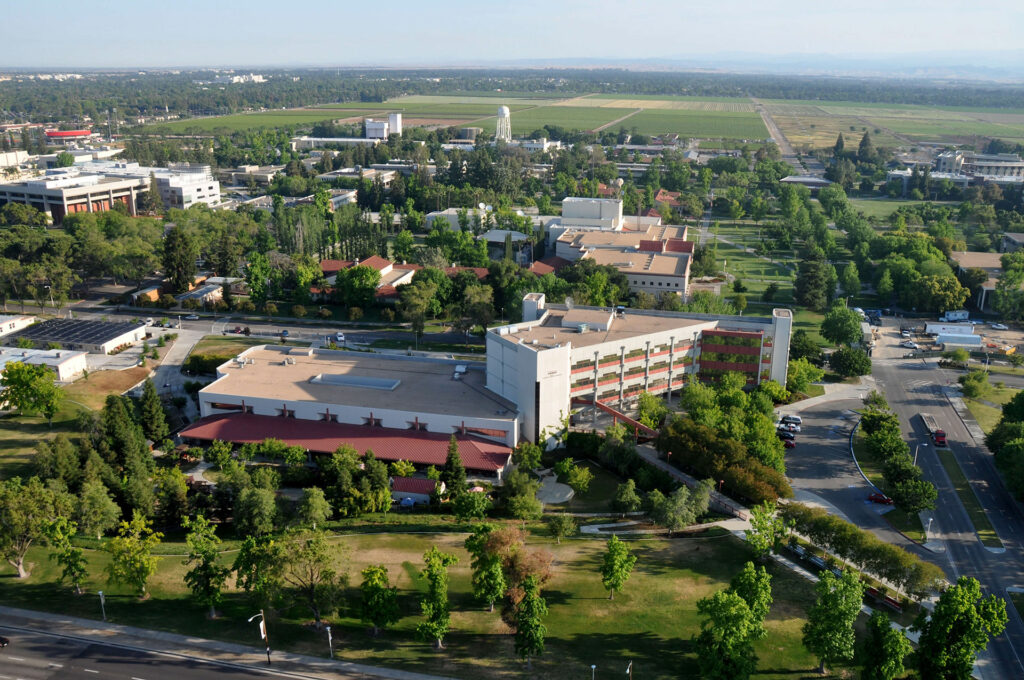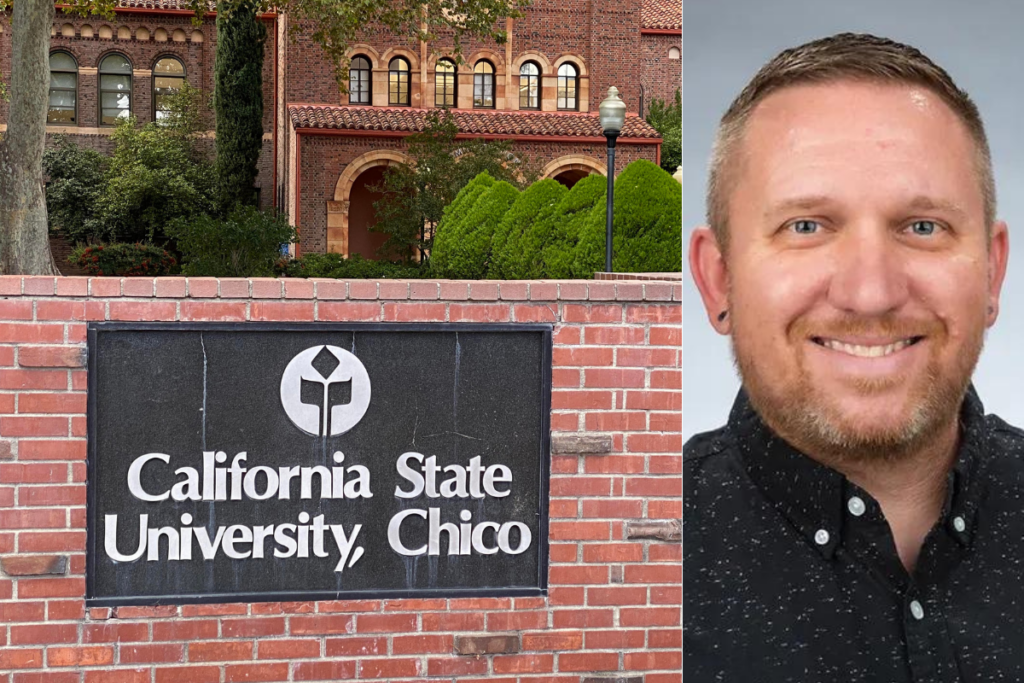
California State Capitol in Sacramento.
Credit: Juliana Yamada / AP
This story was updated June 28 to reflect that Gov. Newsom signed the budget bills.
Top Takeaways
- Education remains largely protected despite a weak budget.
- Compromise allowed UC and CSU to dodge large proposed cuts.
- TK-12 schools see new funding for early literacy, after-school and summer school, and teacher recruitment and retention.
Education will remain mostly shielded from the pain of weak projected state revenues in a 2025-26 budget compromise between Gov. Gavin Newsom and the Legislature. The deal means that public universities, in particular, will dodge bigger cuts proposed by Newsom in January.
The Legislature passed a budget on Friday, and Newsom signed a series of bills later in the day. They include Assembly Bill 121, which includes details on TK-12 and early childhood education; AB 123, which covers higher education, and AB 102, the overall budget.
TK-12 schools will receive significant one-time funding for new or expanded programs, thanks in part to higher revenue in the current year than the Legislature expected.

The surplus, along with deferrals – an accounting gimmick in which some payments to districts are delayed – will help bridge the gap from a drop in revenue expected in 2025-26. It will enable the state to keep transitional kindergarten on track to fully expand to all 4-year-olds this fall.
Kevin Gordon, president of Capitol Advisors, called it “a remarkable budget in a remarkably bad budget year.”
“There are so many really, really painful cuts being made on the non-school side of the budget,” said Gordon, who lobbies on behalf of hundreds of school districts statewide. “TK-12 does very, very well in comparison.”
How well are schools funded in this budget?
Schools and community colleges are guaranteed a minimum level of funding each year — typically 40% of the state revenues — thanks to Proposition 98, a constitutional amendment voters passed in 1988. Funding for TK-12 schools and community colleges is projected to drop $5 billion from 2024-25 to about $114.6 billion.
The cost-of-living adjustment (COLA) in this budget is 2.3%. The federal formula that determines it feels anemic in a state with such high housing costs.
“A COLA at that level, while relatively normal, will feel like a cut at the local level because fixed costs at a school district rise each year 4.5-5% without making any adjustments — just doing what they did the year before,” said Michael Fine, CEO of FCMAT, the state’s Fiscal Crisis and Management Assistance Team. “That has to be made up locally some other way.”

However, a new, one-time $1.7 billion discretionary block grant should help districts address any shortfalls created by declining enrollments and rising expenses.
How about universities?
The University of California and California State University systems were mostly spared. Neither system faces cuts, but 3% of their base funding will be deferred until 2026-27. That amounts to $129.7 million for UC and $143.8 million for CSU. In the meantime, both systems will be able to access a no-interest loan to cover the difference in 2025-26.
The budget also defers previously promised 5% funding increases for both systems until future years. In 2022, Newsom pledged 5% budget increases for UC and CSU in exchange for the systems working toward a number of goals, including increasing graduation rates and enrolling more California residents. Rather than getting those 5% increases in 2025-26, 2% of the hike will be deferred for both systems until 2026-27 and the remaining 3% will be deferred until 2028-29.

There is also $45 million in new funding for Sonoma State University to help support a plan to turn around the campus, which has been forced to eliminate about two dozen degree programs and discontinue its NCAA Division II sports because of CSU cost reductions.
Who are the winners and losers in this budget?
New initiatives for early literacy and a new mathematics framework are getting a lot of financial support. There’s a robust expansion of after-school and summer programming, as well as support for new teachers. More details about those are below.
One of the biggest losers in this budget is ethnic studies. There’s no funding for the 2021 legislative mandate that was supposed to be offered at high schools this upcoming school year. It was supposed to be a required part of a high school diploma beginning in 2029-30.
This is “extremely disappointing” for advocates of ethnic studies, according to Theresa Montaño, a professor of Chicano Studies at California State University, Northridge, who advocates for ethnic studies through the university level.
Some districts will move ahead with their own ethnic studies requirements, but Montaño is worried that many districts will see it as an excuse to drop it altogether. Montaño said supporters will continue to advocate for legislators to fund ethnic studies, particularly through the professional development of teachers new to the discipline.
Montaño doesn’t know specifically why the initiative was dropped from the budget, but she has heard rumblings that controversies in local districts and the federal government’s push to do away with diversity, equity and inclusion initiatives may have contributed to its demise.
How is the budget balanced?
Accounting maneuvers balanced the budget mostly through a combination of deferrals and one-time funding.
The Prop. 98 rainy day fund will provide $405 million, which will be completely depleted by the end of 2025-26. The budget also defers $1.88 billion of Prop. 98 funds a few weeks after the end of this budget year.
The Legislative Analyst’s Office, which offers nonpartisan fiscal analysis, isn’t a fan of these methods, and criticized them in the Governor’s May Revision. It recommended that the budget avoid deferrals and instead reject some of the new one-time spending proposals. That advice was largely not heeded in this final budget.
Why is this such a tight budget year?
California’s budget is always volatile due to its reliance on the whims of the stock market and the wealthy. We’re not in a recession, but federal tariff increases have created economic uncertainty. Newsom blamed federal economic changes for the shortfall between his January and May proposals.
Devastating fires in Los Angeles have also, to a lesser extent, affected the state’s economy and resulted in increased state spending.
The outlook for the budget may worsen further, depending on whether there are cuts to education at the federal level.
How else did community colleges fare?
On top of the cost-of-living adjustment, the budget features new funding for the state’s system of 116 community colleges. That includes:
- $100 million to support enrollment growth in 2024-25 and $139.9 million to do the same in 2025-26
- $20 million for emergency financial aid
- $15 million for Dream Resource Liaisons, college staff who support undocumented students
- $25 million for the Career Passport initiative
However, the budget also reduces some funding for the system, including cutting $150.5 million for the Common Cloud Data Platform, a project to help colleges share data with one another.
What about financial aid?
The Cal Grant, the state’s main program for financial aid, will get more funding as a result of caseload increases. Funding for the Cal Grant will be $2.8 billion in 2025-26.
What is the state doing to recruit teachers?
Over the past decade, the state has allocated $1.6 billion for strategies to counter the teacher shortage, which seem to be effective. One lingering question has been whether that priority will continue after Newsom leaves office.
Newsom and the Legislature answered with $464 million in the 2025-26 budget — enough to continue three recruitment programs and add a new one, paying candidates seeking teaching credentials $10,000 stipends for student teaching. Unpaid student teaching has been cited as a primary reason teacher candidates fail to complete their credentials. The budget includes:
- $300 million in new funding for student teacher stipends
- $70 million to extend the Teacher Residency Program
- $64 million to extend the Golden State Teacher Grant program, which offers college tuition for those who agree to teach in hard-to-staff subjects or underserved districts
- $30 million to extend the National Board Certification program, which offers a professional learning community, pathways to leadership, and tools to deepen teachers’ impact
How is California boosting early literacy?
Newsom this year threw his support behind major legislation to change how children are taught to read, and is jump-starting the process with substantial funding. Advocates wish this had happened a few years ago when the state was swimming in post-Covid funding, but nonetheless are thrilled.

Assembly Bill 1454, which is likely to pass the Legislature this fall, calls for the state to choose evidence-based textbooks and professional development programs that include phonics and strategies of “structured literacy.” The budget will include $200 million for training teachers in transitional kindergarten through grade 5 — enough money to reach about two-thirds of teachers, said Marshall Tuck, CEO of the advocacy nonprofit EdVoice, co-sponsor of the bill. And it will increase funding for hiring and training literacy coaches by $215 million, on top of the $250 million already appropriated.
“Gov. Newsom has made early literacy a state priority in a tight budget year when there are few new expenditures. Investing nearly a half-billion dollars is great for kids,” Tuck said.
What about math?
Math instruction received some new money in the budget, although not of the magnitude of literacy. The $30 million in 2025-26 for professional development will be on top of the $20 million last year for training math coaches and school leaders in the new math frameworks adopted two years ago. County offices of education, working with the UC-backed California Mathematics Project, will lead the effort. An additional $7.5 million will create a new Math Network.

The effort shows potential, but “implementation and rollout will be key,” said Kyndall Brown, executive director of the Mathematics Project. It will take hundreds of millions of dollars to provide for what’s very much needed: a math specialist in every elementary school, he added.
What does the budget include for transitional kindergarten?
The budget includes $2.1 billion to fund the final year of expansion of transitional kindergarten, an extra grade before kindergarten, which will be available to all 4-year-olds beginning in the fall. This includes $1.2 billion ongoing to reduce the ratio in TK classrooms from 1 adult for every 12 children to 1 adult for every 10 children.
How is the budget tackling the state’s child care crisis?
The budget provides $89.3 million to increase rates for subsidies provided to all child care and preschool providers that serve low-income children.

It does not increase the number of children to be served by subsidized child care beyond the current year’s number. The Legislature set a goal to serve 200,000 new children by 2028, compared to 2021-22, but so far has only increased the number of subsidies available by 146,000.
The budget also reduces the Emergency Child Care Bridge Program by $30 million. This program allows foster care families to have immediate access to child care for children placed in their care. The reduction is less drastic than what had been proposed by the governor.
How did after-school and summer programs fare?
More families will be able to take advantage of after-school and summer programs thanks to increases in the Expanded Learning Opportunities Program. These programs both extend the learning day for students and serve as a form of child care for working families.

At the press conference for his May revision, Newsom touted this expansion as a “big damn deal.”
This budget lowers the threshold for school districts to be eligible for this funding. Previously, only school districts where 75% of their students were socioeconomically disadvantaged, English learners or foster youth were eligible. The budget drops that eligibility cutoff to 55%.
Will universal school meals continue?
This budget continues to guarantee two free school meals a day for every child. There is also $160 million in one-time funding for kitchen infrastructure that improves a school’s capacity to serve minimally processed and locally grown food. That funding can also be used for that locally grown food itself. Of that, $10 million is specifically dedicated to nutrition staff recruitment and retention.

Does this budget address any cuts to education by the Trump administration?
No.
Education funding has been a major target of the second Trump administration. This includes some cuts — many challenged in court — to federal grants for teaching preparation and research. It also includes a bid to shrink and ultimately shutter the U.S. Department of Education. The administration has also specifically threatened California’s funding because of its inclusion of transgender students in athletics or sexual education.
But you won’t find any attempt in the state budget to respond to what is happening in Washington. That’s partially a consequence of it being a weak budget year, but it’s also the right thing to do, despite the fact that educators are on edge about potential cuts, according to Gordon, who is a consultant for hundreds of school districts in the state.
“If the state rushed in and paid for everything, it lets [the federal government] off the hook,” he said.
Is there money for schools affected by the Los Angeles wildfires?
The fires affected both school enrollment and taxes, which won’t be paid by those affected until fall. The budget sets aside $9.7 million to backfill taxes. TK-12 schools, including charter schools, that rely on attendance for their state funding will be held harmless for any major dips.
Graphics by Andrew Reed.
